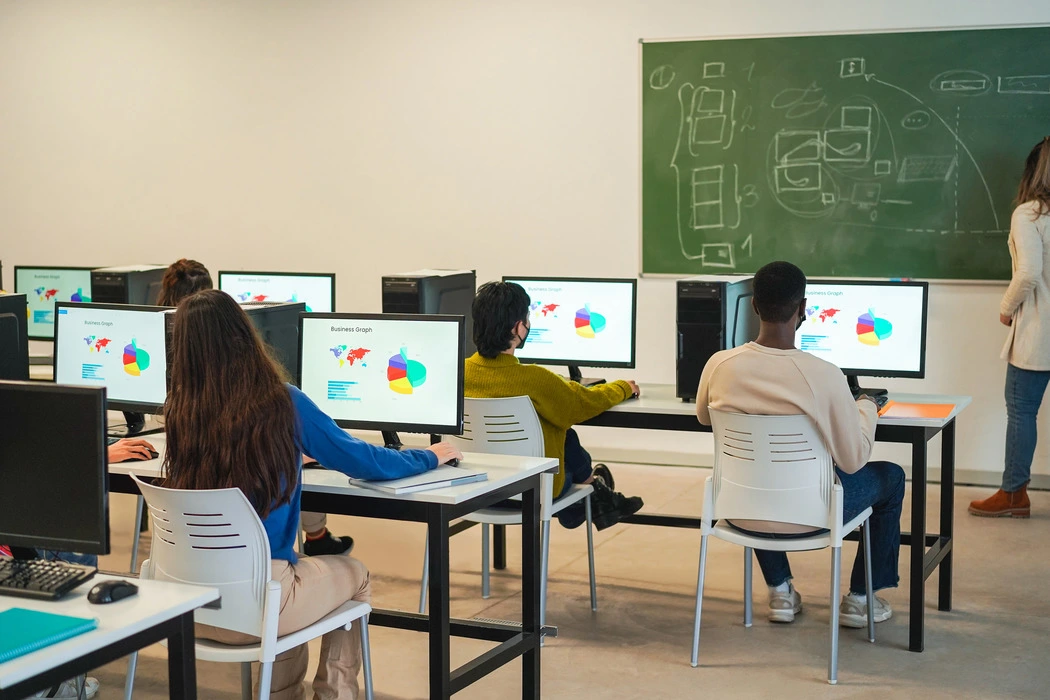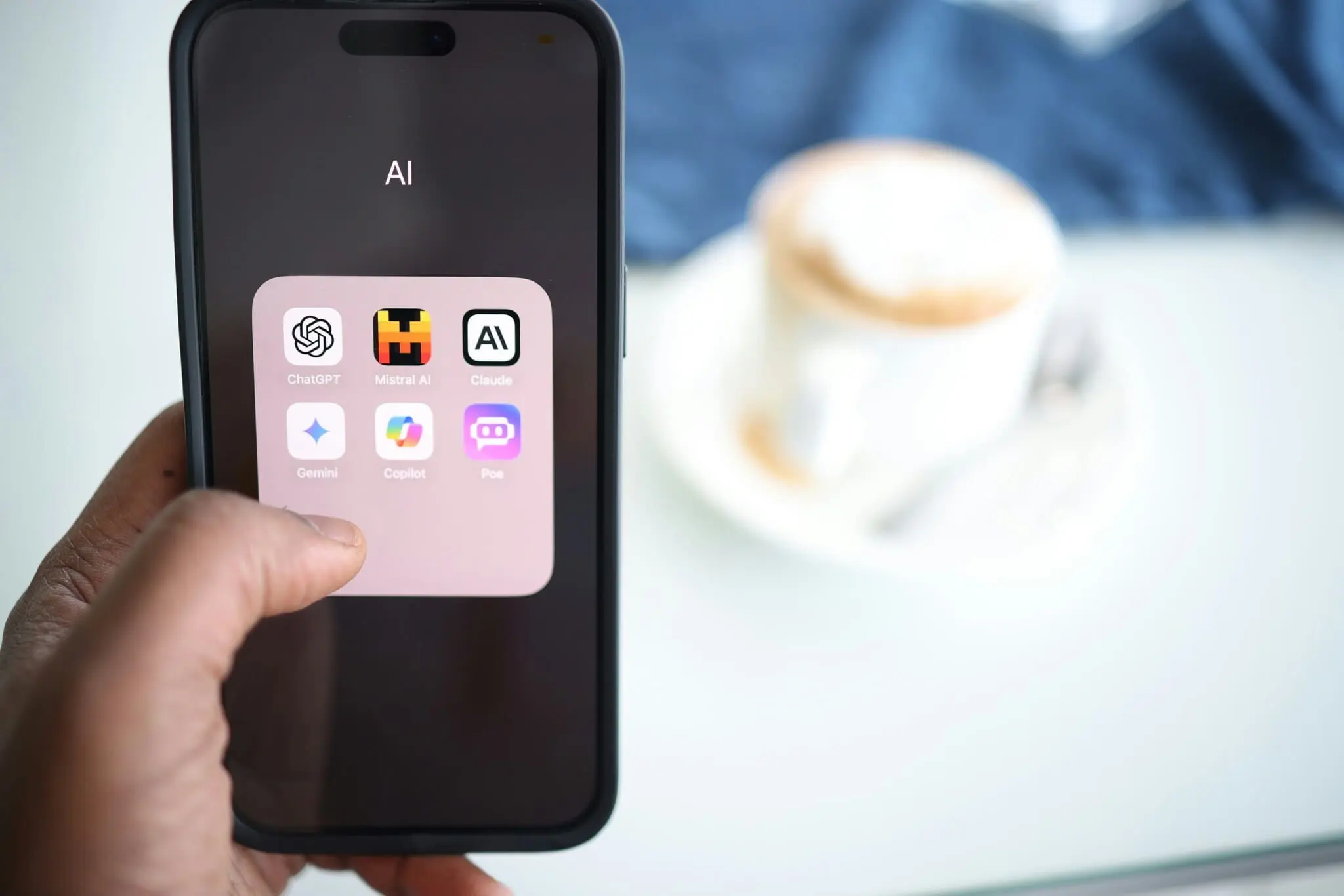A Global Education Race Takes Off
Governments worldwide are racing to teach kids artificial intelligence as a core skill. In China, the capital city of Beijing has launched a bold new initiative: starting this year, all primary and secondary schools must offer at least eight hours of AI classes per year (China starts training six-year-olds in AI to develop future tech leaders like DeepSeek’s Liang Wenfeng - The Economic Times). Even six-year-olds will learn the basics of chatbots, coding, and AI ethics alongside their regular subjects (China starts training six-year-olds in AI to develop future tech leaders like DeepSeek’s Liang Wenfeng - The Economic Times). The education ministry has gone so far as to call AI the “golden key” to China’s future (China starts training six-year-olds in AI to develop future tech leaders like DeepSeek’s Liang Wenfeng - The Economic Times). Nationwide, 184 schools have been selected to pilot hands-on AI programs that will eventually scale up (China starts training six-year-olds in AI to develop future tech leaders like DeepSeek’s Liang Wenfeng - The Economic Times). The goal is clear: integrate AI into textbooks and curricula so deeply that China becomes a “strong-education nation” powered by homegrown AI innovation (China to rely on AI in bid to become a 'strong-education nation' - VnExpress International) (China starts training six-year-olds in AI to develop future tech leaders like DeepSeek’s Liang Wenfeng - The Economic Times).
In the United States, efforts have been more decentralized but are gaining momentum. At the federal level, an executive order signed in April 2025 directs schools and teachers to “appropriately integrate AI into education” to keep America competitive (Trump Executive Order Calls for Artificial Intelligence to Be Taught in Schools | EdSurge News). Its stated aims are teaching students and training teachers in AI to improve learning outcomes (Trump Executive Order Calls for Artificial Intelligence to Be Taught in Schools | EdSurge News). States and districts have followed suit: about half of U.S. states have now issued official guidance on AI for K–12 education ('A Solid Start': States Are Crafting AI Guidance for Schools, But Have More to Do). California became the first state to mandate AI literacy, requiring schools to weave AI concepts into math, science, and history classes by 2025 (China’s AI Education Starts at Age 6 — Is the US Falling Behind?). New Jersey and Indiana have poured millions of dollars into AI teacher training, while Utah even created new state education positions focused on AI implementation (China’s AI Education Starts at Age 6 — Is the US Falling Behind?) ('A Solid Start': States Are Crafting AI Guidance for Schools, But Have More to Do). Meanwhile, organizations like Code.org are piloting AI teaching assistants in classrooms to give instant feedback to students, freeing teachers to focus on creative instruction (China’s AI Education Starts at Age 6 — Is the US Falling Behind?).
Both countries agree that AI skills are no longer optional. As one analysis warns, “AI literacy — the fundamental understanding of these technological tools — isn’t optional” (AI Education Is the New Space Race. Here’s How America Must Respond – The 74). Whether through China’s top-down mandates or America’s local innovation, educators recognize that tomorrow’s workforce will expect AI as a basic competency.
Growing Up AI-Savvy
What will it be like for today’s children to learn with AI? This generation is already growing up surrounded by smart assistants and apps. In China, recent surveys show that 40% of students in one high school used AI chatbots to help with their homework (Chatbots for children: China grapples with how to teach use and ethics of AI in schools | South China Morning Post). Kids are curious and quick to embrace new tools – they use AI to look up information, practice problems, and even compose creative text. Early exposure to AI concepts can demystify technology and spark interest. In fact, education experts note that learning about AI early on “sparks curiosity and creativity, preparing students to become active and responsible participants in the workforce of the future” (Advancing Artificial Intelligence Education for American Youth – The White House). By understanding AI from a young age, children can become fluent in a digital language, much as past generations became fluent in computers or the internet.
At the same time, parents and teachers wonder how these young learners will develop. Will kids who have an AI tutor in math become over-dependent on gadgets? Will they still practice mental math if a calculator is always at hand? Educators from both countries stress balance. China’s teachers, for example, are “working out how to teach children to use the new technology ethically” so it doesn’t undermine critical thinking skills (Chatbots for children: China grapples with how to teach use and ethics of AI in schools | South China Morning Post). The message is that AI should be a tool, not a crutch.
The Upside: Why Early AI Learning Can Help
- Personalized Learning: AI-powered tools can adapt lessons to each student’s pace and interests. Rather than a one-size-fits-all lecture, a learning app can give extra problems or hints just when a child needs them. This kind of on-the-spot feedback can accelerate learning – some studies suggest students master subjects much faster with adaptive AI tutors. AI in the classroom could mean “more innovative and challenging” lessons tailored to every learner (China to rely on AI in bid to become a 'strong-education nation' - VnExpress International).
- Skill-Building for the Future: As our economies shift, AI literacy is itself a job skill. Early AI education means children won’t just learn to use current technologies, they’ll learn to understand and create new ones. U.S. leaders note that early exposure to AI “will spark curiosity and creativity” and help cultivate the next generation of innovators (Advancing Artificial Intelligence Education for American Youth – The White House). In short, it prepares students for STEM careers and any field that will soon use AI.
- Enhanced Engagement: Kids tend to be excited by tech. Interactive AI games, robot kits, and programming puzzles can make STEM subjects feel fun and relevant. By introducing these tools in school, educators hope to boost interest in science and technology from a young age.
- Support for Teachers: AI isn’t meant to replace teachers but to augment them. Automating routine tasks – like grading quizzes or organizing lesson plans – frees teachers to spend more time on one-on-one teaching. For example, the U.S. order explicitly highlights using AI to reduce time-consuming admin tasks, giving teachers more time to interact with students (Trump Executive Order Calls for Artificial Intelligence to Be Taught in Schools | EdSurge News). Well-trained teachers can use AI assistants as co-pilots in the classroom.
- Inclusive Learning: When designed thoughtfully, AI tools can help students with different learning needs. Text-to-speech, language translation, and interactive tutoring can assist children with disabilities or language barriers, making education more accessible.
The Downside: Risks and Concerns
- Critical Thinking and Over-Reliance: One worry is that students might lean on AI for answers instead of thinking through problems. As Chinese educators found, the buzz around chatbots has sparked debate: they must ensure pupils do not “lose critical thinking skills” (Chatbots for children: China grapples with how to teach use and ethics of AI in schools | South China Morning Post). If a child always asks a computer to solve a math problem, will they practice the underlying concepts? Experts caution that technology should challenge students, not give them an easy out. Indeed, education leaders in China stress using AI in a “balanced” way to avoid overdependence (China starts training six-year-olds in AI to develop future tech leaders like DeepSeek’s Liang Wenfeng - The Economic Times).
- Ethical and Privacy Issues: Teaching children with AI raises new ethical questions. AI systems learn from data, which might include personal student information. There are concerns about how that data is stored and used, and whether algorithms might have biases. Both countries’ educators emphasize integrating ethics into the curriculum (for example, Beijing’s program explicitly includes AI ethics lessons (China starts training six-year-olds in AI to develop future tech leaders like DeepSeek’s Liang Wenfeng - The Economic Times)). Still, many parents worry about children encountering inappropriate or biased content. Transparency and oversight will be needed as schools adopt more AI tools.
- Equity and Access: Not every school has the same technology. There’s a risk that wealthy districts could surge ahead with new AI resources while underfunded schools fall further behind. If AI becomes a basic skill, unequal access could widen the achievement gap. Policymakers must watch for this, ensuring that rural or low-income schools receive support and training (an issue already highlighted in state education surveys ('A Solid Start': States Are Crafting AI Guidance for Schools, But Have More to Do)).
- Changing Role of Educators: Some teachers fear that AI could supplant parts of their role. While many see it as a helper, others worry about job shifts. Training teachers to use AI is essential; a lack of preparation could lead to misuse or fear. The U.S. initiative, for example, calls for comprehensive AI training for educators so teachers can become knowledgeable guides in this tech-rich classroom (Trump Executive Order Calls for Artificial Intelligence to Be Taught in Schools | EdSurge News).
- Screen Time and Social Skills: Finally, too much technology can diminish face-to-face interaction. Schools will need to balance screen-based AI activities with hands-on projects and social learning to keep children engaged with each other as well as with computers.
A Glimpse of the Classroom of Tomorrow
Picture a day in an AI-integrated school: A student starts math class on a tablet. An AI tutor greets her, knows she struggled with fractions last week, and presents problems just at that right difficulty. The teacher circulates the room, discussing each student’s progress, guided by live analytics from the AI. In another corner, a group of children codes a simple game with a robot, learning logic and creativity together. Ethical discussions about how robots think happen alongside lessons on history and literature. If U.S. and Chinese examples are any guide, VR and virtual tutors may become as normal as textbooks once did (China starts training six-year-olds in AI to develop future tech leaders like DeepSeek’s Liang Wenfeng - The Economic Times) (China’s AI Education Starts at Age 6 — Is the US Falling Behind?). In some pilot programs abroad, schools have even experimented with “teacher-less” VR classrooms where AI provides lessons – a vision of a highly tech-infused future (China starts training six-year-olds in AI to develop future tech leaders like DeepSeek’s Liang Wenfeng - The Economic Times).
Education in this era could become highly personalized and flexible. No longer will progress be measured only by grade level; each student could move ahead once an AI confirms mastery of a topic. Project-based learning, guided by AI mentors, may take precedence. Teachers will shift from delivering content to coaching students on higher-order skills, creativity, and how to work with AI.
From “Bonus” to Bedrock: AI as Core Literacy
Just a few years ago, coding clubs or robotics kits were “add-ons” in schools. Today, leadership in both China and the U.S. treat AI more like reading or math – a fundamental skill. Commentators now say AI literacy and readiness “will set the foundation for the future” (AI Education Is the New Space Race. Here’s How America Must Respond – The 74). In China, this has meant writing AI into the national education plan and testing pilot courses at top universities (China starts training six-year-olds in AI to develop future tech leaders like DeepSeek’s Liang Wenfeng - The Economic Times). In America, it means lawmakers and educators framing AI knowledge as essential for economic security (Trump Executive Order Calls for Artificial Intelligence to Be Taught in Schools | EdSurge News). The message to students is clear: understanding AI will soon be as expected as knowing how to use a computer or smartphone.
Ethical Dimensions: Hope Meets Caution
Ultimately, the ethical dimension of teaching AI to children cuts both ways. Optimists point out that teaching ethics hand-in-hand with AI (as China’s program does (China starts training six-year-olds in AI to develop future tech leaders like DeepSeek’s Liang Wenfeng - The Economic Times)) can shape responsible digital citizens. Early education can instill awareness of issues like bias, data privacy, and the value of human skills. On the other hand, skeptics worry that with every new technology, society must guard against unintended harms. Will today’s digital natives maintain empathy and independent thought? Already, educators observe that ChatGPT and similar tools make it easy to cut corners on writing tasks. The debate in China – “how to guide pupils…while ensuring they do not lose critical thinking skills” (Chatbots for children: China grapples with how to teach use and ethics of AI in schools | South China Morning Post) – echoes similar concerns in the U.S. about plagiarism and content safety.
By presenting these discussions in schools rather than avoiding them, both countries hope to train a generation that can use AI wisely. The right balance is crucial. We can be cautiously optimistic that students will benefit from better tools and new perspectives. But we must also remain vigilant about protecting childhood learning and privacy.
Conclusion: A Conversation Worth Having
China’s sweeping mandates and the U.S. push for policies show one thing: AI in schools is no longer sci-fi, it’s here. As students grow up alongside these technologies, education itself is transforming. The potential is vast – from unlocked creativity to stronger future workforces – but so are the stakes.
This is an exciting frontier. Teachers, parents, and students are all participants in shaping it. By sharing ideas and experiences, we can ensure AI-enhanced education lifts everyone up rather than leaving anyone behind. With careful thought and open discussion, the new era of AI education could empower a generation to thrive in tomorrow’s world. The conversation has just begun – and every curious mind is invited to join.
Sources: Recent education news and policy reports (China starts training six-year-olds in AI to develop future tech leaders like DeepSeek’s Liang Wenfeng - The Economic Times) (China to rely on AI in bid to become a 'strong-education nation' - VnExpress International) (China’s AI Education Starts at Age 6 — Is the US Falling Behind?) (Trump Executive Order Calls for Artificial Intelligence to Be Taught in Schools | EdSurge News) (AI Education Is the New Space Race. Here’s How America Must Respond – The 74) ('A Solid Start': States Are Crafting AI Guidance for Schools, But Have More to Do) (Chatbots for children: China grapples with how to teach use and ethics of AI in schools | South China Morning Post) (China starts training six-year-olds in AI to develop future tech leaders like DeepSeek’s Liang Wenfeng - The Economic Times) (Trump Executive Order Calls for Artificial Intelligence to Be Taught in Schools | EdSurge News) (Chatbots for children: China grapples with how to teach use and ethics of AI in schools | South China Morning Post) (China to rely on AI in bid to become a 'strong-education nation' - VnExpress International).



